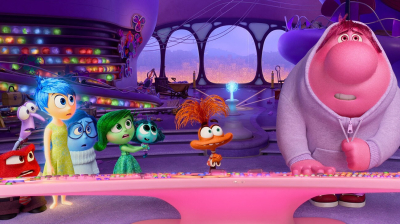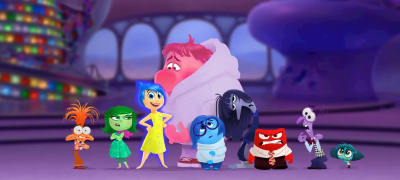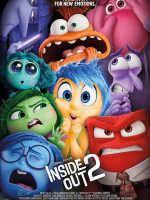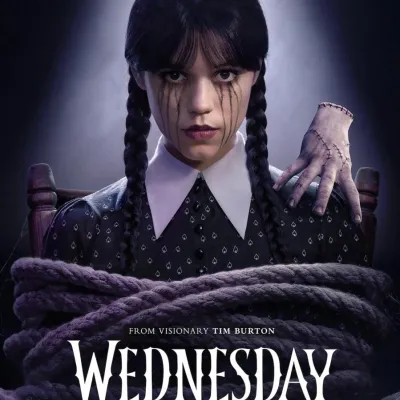Inside Out 2
Pixar has always had a knack for producing emotionally resonant animations, and Inside Out 2 continues this tradition admirably. I've been a fan of Pixar's work for years, yet I approached this sequel with a mixture of excitement and apprehension. The original Inside Out was a masterpiece, and sequels often struggle to measure up to their predecessors.
Thankfully, Inside Out 2 exceeded my expectations in many ways. In this review, I'll delve into what makes this film special, exploring its storyline, character development, emotional depth, creativity, and more. Whether you've seen the original or not, this film has something for everyone.
The Evolution of Riley
Riley, the central human character, has grown since we last saw her. She's now a teenager grappling with the challenges that come with adolescence. This transformation provided a fresh canvas for exploring new emotional landscapes, making Riley's journey feel incredibly authentic.
As someone who vividly remembers the trials of teenage years, I found myself relating to Riley on various levels. The way the film captures her struggles with school, friendships, and self-identity adds layers of richness to the narrative that were less pronounced in the first movie.
Introducing New Emotions
The sequel adds several new emotions to Riley's mental headquarters. Anxiety, Envy, Embarrassment, and Ennui join the original crew of Joy, Sadness, Anger, Disgust, and Fear. These additions bring fresh dynamics and conflicts to the screen, offering plenty of opportunities for both humor and pathos.
Anxiety, in particular, takes center stage in the film. Her character is portrayed with a degree of nuance and empathy that is both heart-wrenching and illuminating. The mere presence of these new emotions underscores the complexity of human experience, particularly during the tumultuous teenage years.
Visual Creativity
Pixar continues to outdo itself with imaginative settings inside Riley's mind. From the "Islands of Personality" to the dazzling abstractions of thoughts and memories, the film is a feast for the eyes.
The use of color and design to represent different emotions and mental states is particularly impressive. For example, Anxiety's visual manifestations are rendered in darker, more chaotic hues, contrasting beautifully with Joy's bright and vibrant colors. These artistic choices deepen our understanding and connection to the characters.
Soundtrack and Sound Design
Music and sound design play pivotal roles in enhancing the emotional impact of Inside Out 2. The soundtrack, composed by Michael Giacchino, blends new themes with familiar motifs from the first film, creating a seamless auditory experience that carries viewers through the highs and lows of the story.
Sound effects are equally effective, cleverly emphasizing key emotional beats. For instance, the jarring sound that accompanies moments of anxiety helps viscerally convey the character's inner turmoil. These auditory elements work in tandem with the visuals to create an immersive emotional experience.
Character Development
The character development in Inside Out 2 is a testament to Pixar's storytelling prowess. Joy, who initially seemed like a one-dimensional cheerleader in the first installment, evolves into a more rounded character grappling with her own limitations and fears. Sadness, too, finds new ways to contribute, showcasing her depth and wisdom.
The new emotions are also well-developed, each bringing unique traits and challenges. Embarrassment and Ennui may not have as much screen time as Anxiety, but their moments are impactful. These nuanced character arcs make the interactions between the emotions more engaging and realistic.
Humor and Heart
One of the standout features of Inside Out 2 is its balance of humor and heart. The film expertly uses humor to explore complex emotional landscapes without ever trivializing them. Moments of levity are skillfully interwoven with more poignant scenes, providing a balanced viewing experience.
Embarrassment, for example, offers plenty of laugh-out-loud moments, particularly during awkward teen encounters. Yet these scenes also serve to highlight Riley’s vulnerability, adding emotional weight to the humor. This duality is where Pixar often excels, and Inside Out 2 is no exception.
Emotional Depth
While humor is an integral part of Inside Out 2, the film’s true strength lies in its emotional depth. Pixar delves into complex themes like mental health, identity, and personal growth with a sensitivity and insight that feels both genuine and profound.
The portrayal of Anxiety is particularly compelling. Rather than being a mere antagonist, Anxiety is depicted as a multi-faceted character with understandable motives. Her journey throughout the film is a touching reminder of how we all wrestle with our insecurities and fears, especially during our formative years.
Storytelling Excellence
Pixar has always been lauded for its exceptional storytelling, and Inside Out 2 is a prime example of this. The narrative structure is well-crafted, seamlessly intertwining various subplots into a coherent, engaging story. Each scene serves a purpose, contributing to both character development and the overarching themes.
The movie's pacing is impeccable. There are no dull moments, yet it also doesn’t rush through pivotal scenes. This balance ensures that viewers remain invested from start to finish, making the film both entertaining and thought-provoking.
Realism and Relatability
Despite its fantastical premise, Inside Out 2 remains grounded in realism. The film accurately captures the emotional rollercoaster of adolescence, reflecting the internal struggles that many teens face. This sense of relatability is one of the film's greatest strengths.
Watching Riley navigate her teenage years, I couldn't help but recall my own experiences. The authenticity of her emotional journey makes the film feel like a mirror reflecting real-life challenges and triumphs, adding another layer of connection for the audience.
Impact and Message
One of the most powerful aspects of Inside Out 2 is its underlying message. The film emphasizes the importance of embracing all emotions, even the uncomfortable ones. It teaches that anxiety, envy, and even embarrassment can play crucial roles in our growth and self-understanding.
This message is particularly relevant in today's world, where mental health awareness is more important than ever. Inside Out 2 offers a valuable lesson for viewers of all ages, encouraging us to acknowledge and accept our full range of emotions.
Interactions and Dynamics
The interactions between the emotions in Riley's mind are another highlight of the film. The dynamic between the old and new emotions creates a compelling narrative tension, driving much of the plot. Watching Joy and Anxiety navigate their differences provides not only conflict but also moments of surprising camaraderie.
These interactions are expertly written and performed, showcasing the talents of the voice cast. The chemistry between the characters feels natural and adds to the film's overall charm. It’s a testament to the strength of the script and direction that these interactions feel so genuine.
Voice Acting
The voice acting in Inside Out 2 is top-notch. Amy Poehler returns as Joy, delivering a performance that is both effervescent and layered. Phyllis Smith's Sadness remains endearing and wise, providing a counterbalance to Joy’s optimism.
The new cast members also shine. The voice actors for Anxiety, Envy, Embarrassment, and Ennui bring their own distinct styles, enriching the film's emotional palette. These performances make it easy to connect with the characters on a deeper level, enhancing the overall viewing experience.
Human Element
Despite its focus on emotions, Inside Out 2 never loses sight of the human element. Riley's experiences are at the heart of the story, grounding the film in reality. Her journey provides a relatable narrative thread that ties together the various emotional arcs inside her mind.
This emphasis on the human aspect makes the film universally relatable. Whether you're a teenager going through similar experiences or an adult reminiscing about your own youth, Riley's story resonates on a deeply personal level. This human touch sets Inside Out 2 apart from many other animated films.
Conclusion
With its compelling storyline, rich character development, emotional depth, and stunning visuals, it stands out as one of Pixar's finest works.
This is not just a film for kids; it's a nuanced exploration of human emotions that speaks to audiences of all ages. If you haven’t seen it yet, I highly recommend giving Inside Out 2 a watch. It's a journey through the mind that you won't soon forget.































